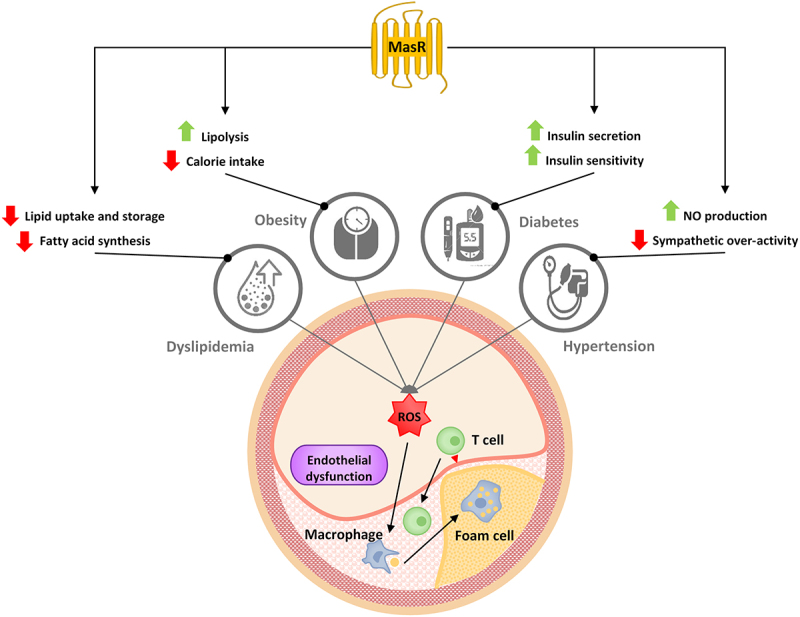Figure 2.

Relationship between MasR and coronary atherosclerosis risk factor.
Note: LDL infiltration into the vessel wall, along with the induction of oxidative stress and the release of inflammatory mediators that can be exacerbated by hypertension, diabetes, and obesity lead to the formation of atherosclerosis plaque. MasR stimulation not only improves lipid profiles by reducing uptake, storage and synthesis of fatty acid, but also modifies other risk factors. Increased bioavailability and weakening sympathetic signals due to the activation of MasR reduces blood pressure. The downstream pathways of this receptor increase insulin secretion and sensitivity to it. In addition, induction of lipolysis and reduced calorie intake by MasR results in weight loss
